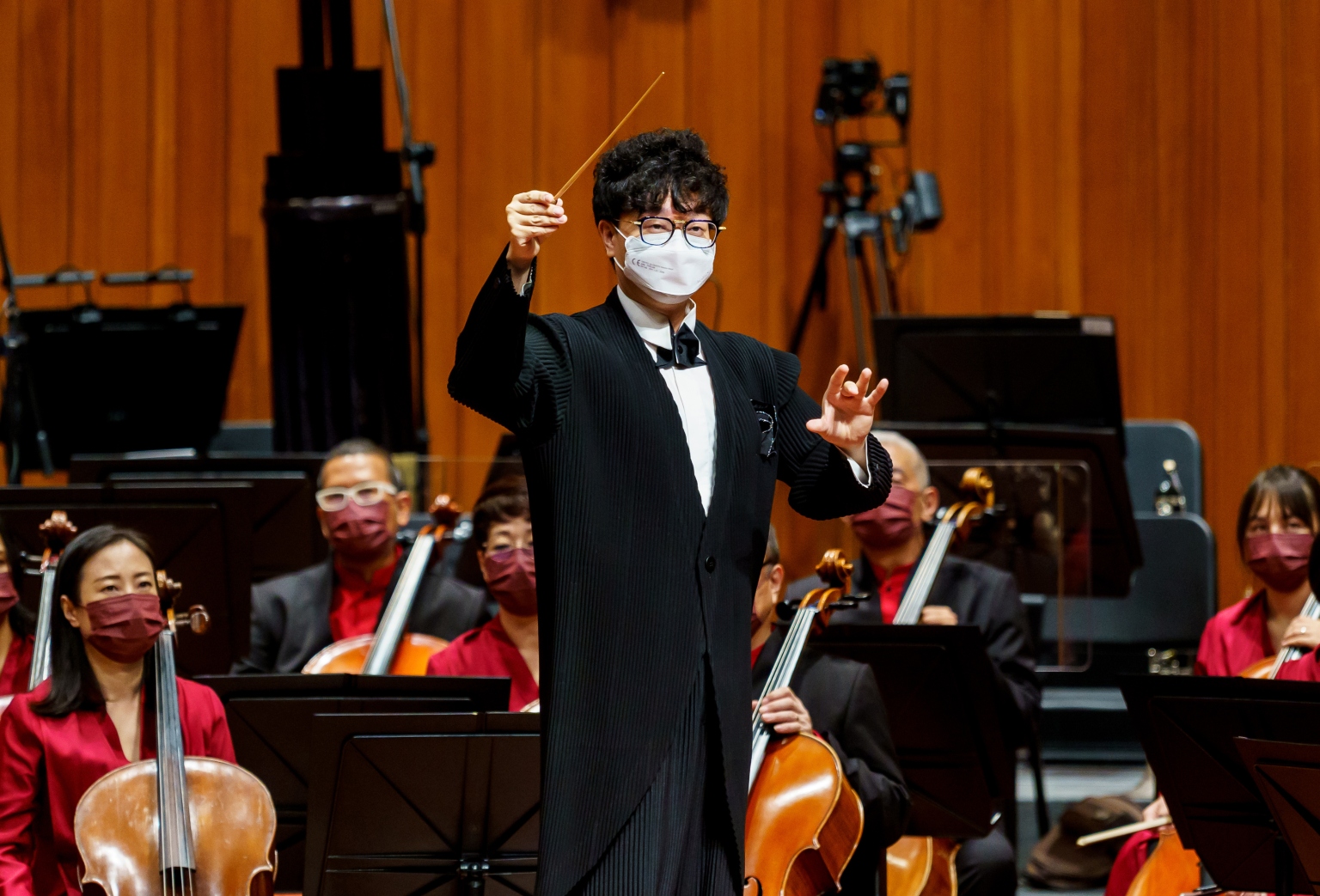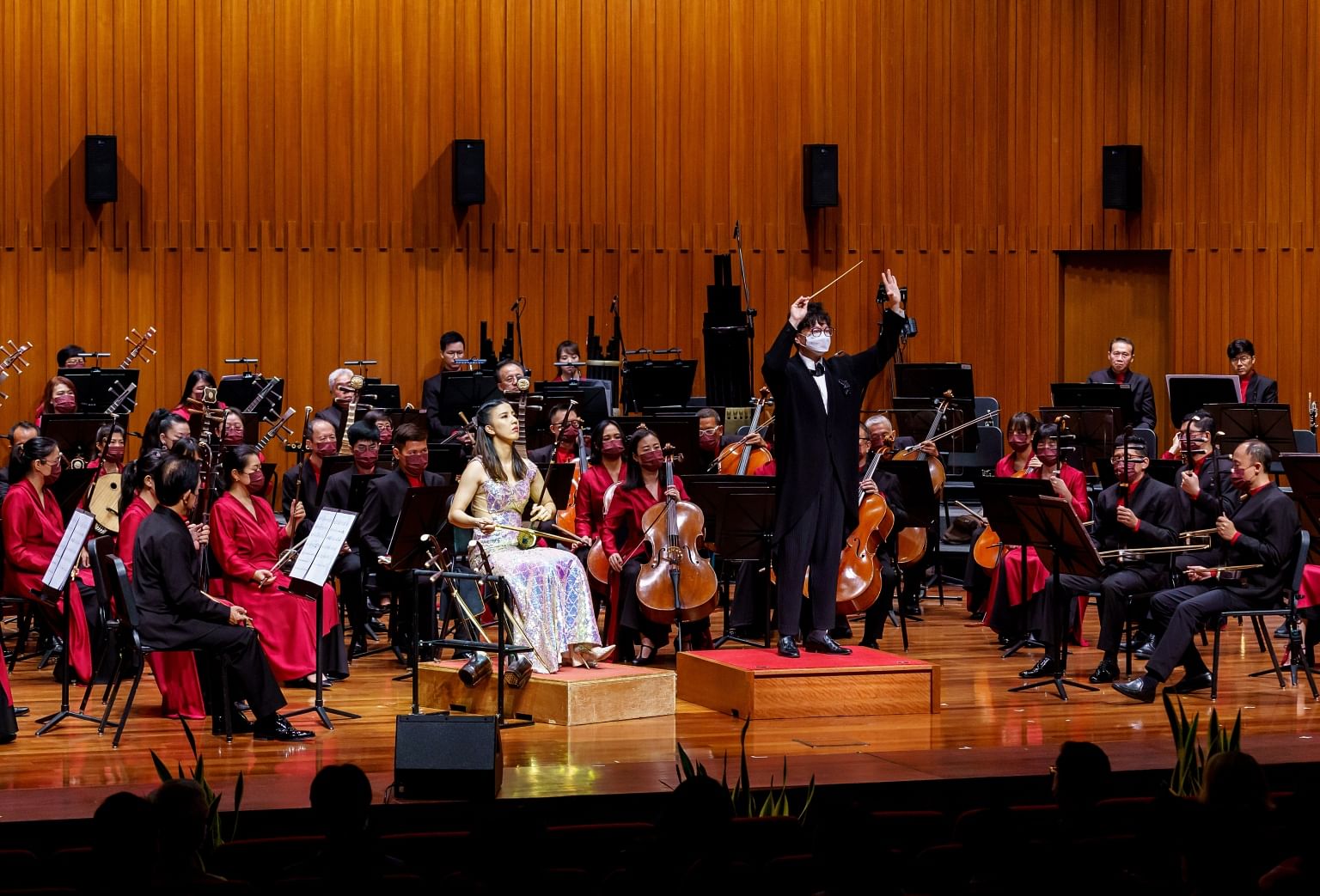Conductor Kahchun Wong returns to Singapore Chinese Orchestra in triumpant concert
Sign up now: Get ST's newsletters delivered to your inbox

Kahchun Wong was keen to avoid imitating novelties from other scores, instead springing surprises of his own.
PHOTO: SINGAPORE CHINESE ORCHESTRA
Follow topic:
Concert
Kahchun Wong & SCO
Singapore Chinese Orchestra
Singapore Conference Hall
Aug 20, 7.30pm
Singapore Conference Hall
Aug 20, 7.30pm
Singaporean conductor Kahchun Wong (better known to locals as Wong Kah Chun), recently appointed chief conductor of the Japan Philharmonic, made a triumphant return to the orchestra that helped launch his podium career.
While still a student at the Yong Siew Toh Conservatory, he was an assistant conductor of the Singapore Chinese Orchestra under Yeh Tsung's mentorship, a position that paved the way to success in multiple international competitions.
Conducting entirely from memory, Wong opened the concert with the Singapore premiere of Oscar-winning composer Tan Dun's Fire Ritual. This 2018 violin concerto was adapted from his film score for Nanjing 1937 (1995) and subtitled "a music ritual for the Victims of War". An example of "orchestral theatre", the musicians are part of the act as they are placed unexpectedly in the galleries and aisles, and besides playing instruments also vocalise and produce sound effects (such as rustling of paper).
The soloist was SCO's own zhonghu player Wu Kefei, who performed on three huqins of different registers. The zhonghu's low and gutteral voice, raw and earthy, was contrasted with the erhu's pathos-inducing plaints and the gaohu's mimicry of birdcalls. More than a juggling act, her virtuosity was well-matched by playing of poetry and alluring elegance.
Wind players strategically placed in offstage locations provided stunning antiphonal effects that contributed to the visual and aural spectacle. The half-hour work, part temple ceremony and part movie-music epic, laid bare the perpetual toll of history: the suffering of common people.
Quite different, and arguably more spectacular, was the world premiere of Russian composer Modest Mussorgsky's Pictures At An Exhibition in an orchestration by conductor Wong for Chinese instruments. Orchestral transcription of this piano suite abound, the most popular being Frenchman Maurice Ravel's, recognised for its originality and richness of colour.
Wong's no-holds-barred edition, however, topped every other by maximising the full timbrel possibilities of every instrument at his disposal. Central to this self-described sinfonia concertante was the quintet of soloists formed by Tan Man Man (erhu), Lee Cheng Jun (dizi), Zhang Yin (pipa), Ma Huan (yangqin) and Benjamin Boo (percussion). Leading the parade, they provided most of the melodic interest by revelling in feverish and frenetic activity, while the orchestra filled in with near-psychedelic textures and details.

Wong was keen to avoid imitating novelties from other scores, instead springing surprises of his own. In The Old Castle, where Ravel used the saxophone, Wong employed low dizi accompanied by wordless voices. Metal plates and heavy chains provided rhythmic impetus to Bydlo, the lumbering ox-cart. The Ballet Of Unhatched Chicks became a riot in the henhouse, winds having a field day besides sneaking in several roosters and even an odd koel.
Only someone from Singapore could have transformed the marketplace in Limoges into a bustling pasar resounding with Malay drumming. The xun (ocarina) and a Tibetan prayer bowl gave In Lingua Mortua (In The Language Of The Dead) the eerie vibes it deserved, while the hall's ornamental ancient bianzhong (bronze chime bells) found their niche in the closing Great Gate of Kiev.Accompanying projected pictures drawn by primary school children, this rich smorgasbord of sound and colour led by Wong could be described in two words: Absolutely brilliant.

